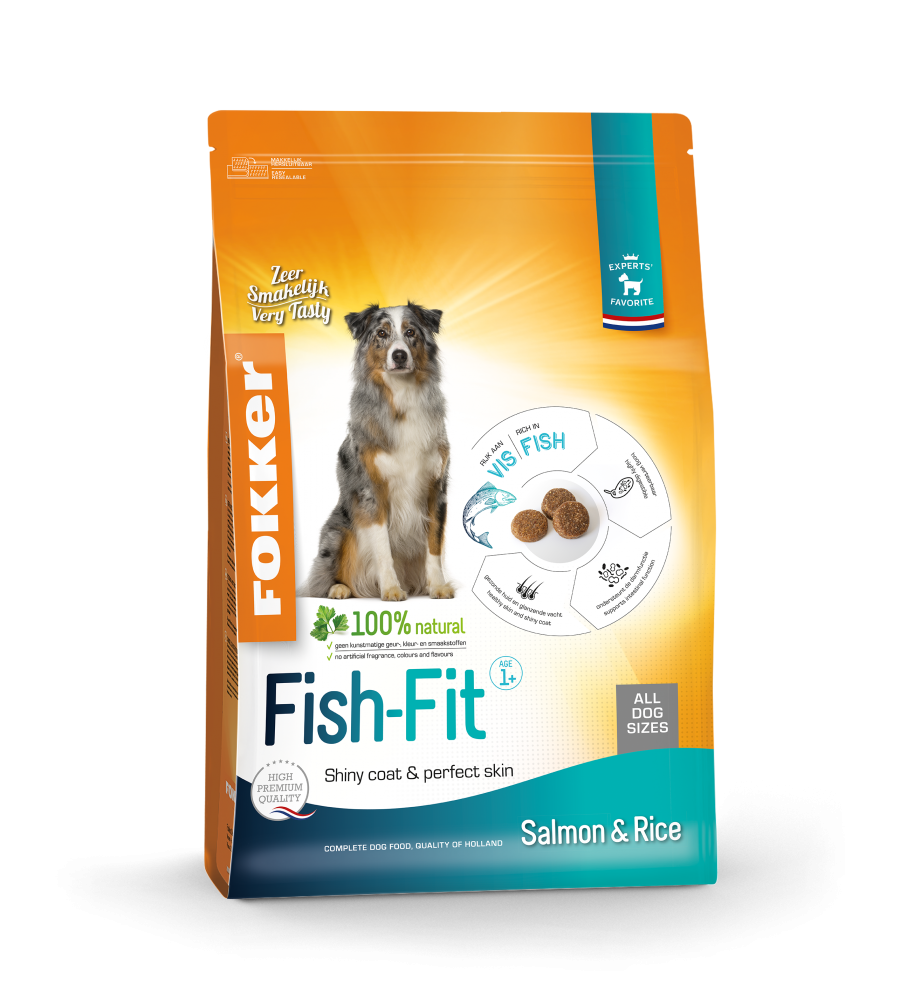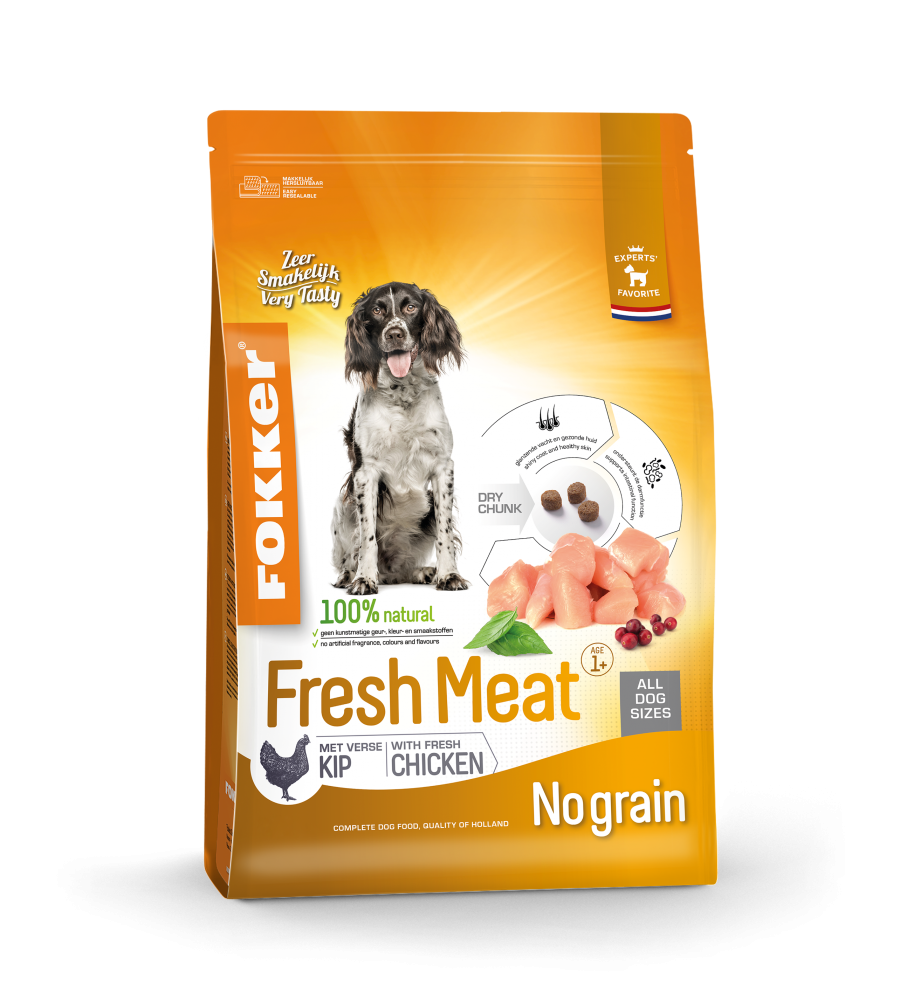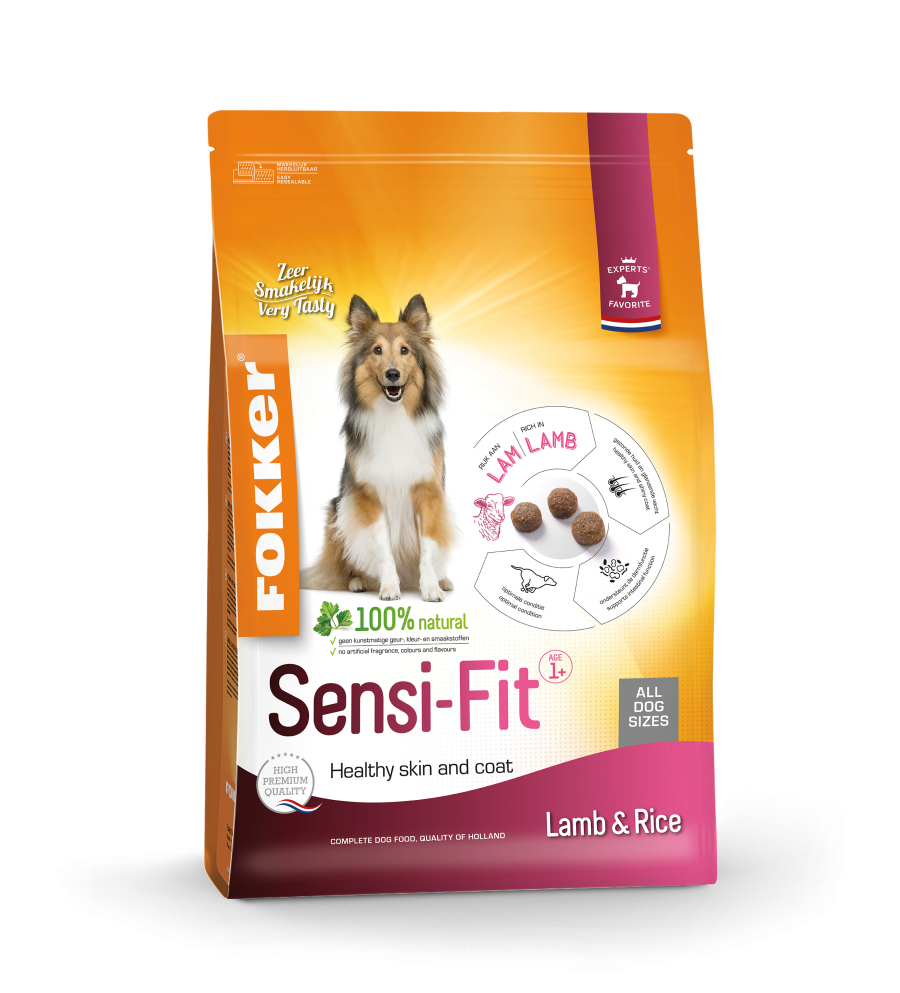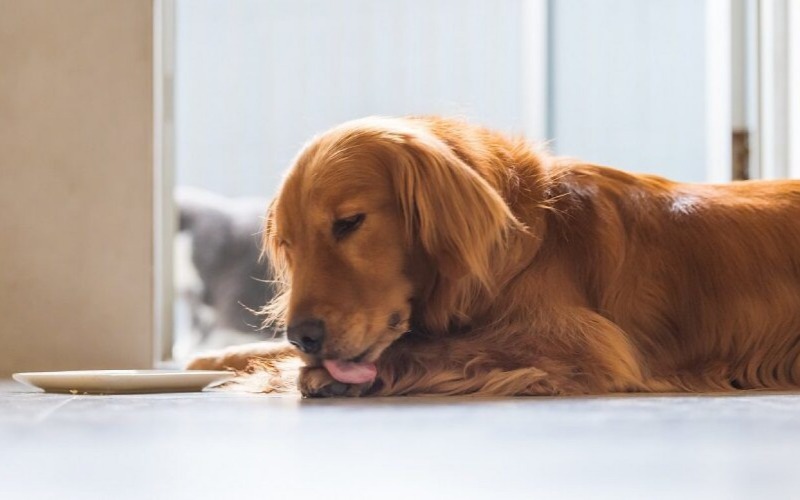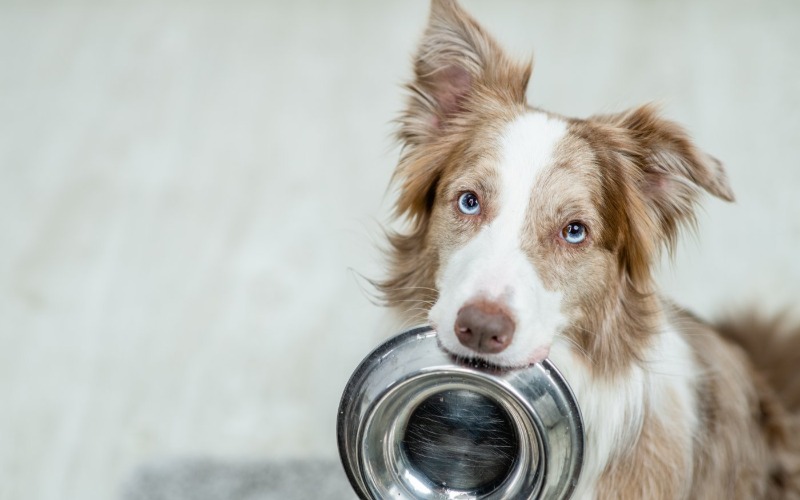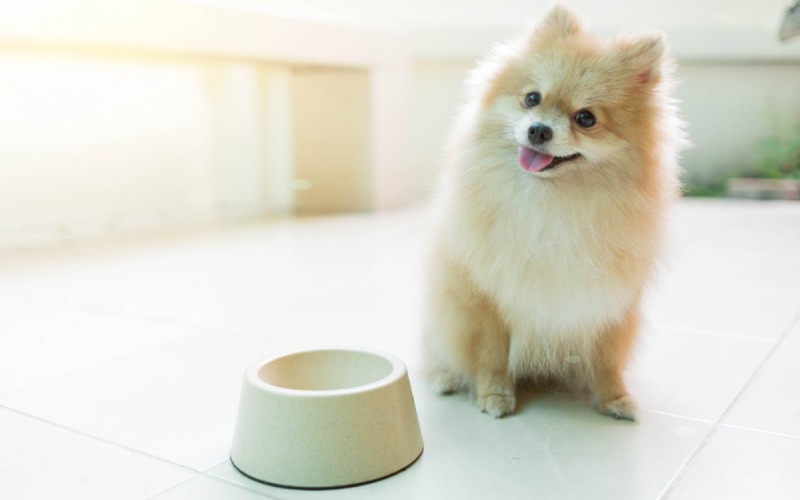As your dog stands next to his food bowl, a pair of cute eyes stares at you… how could you resist them? “Ah, you deserve a piece of candy,” you quickly think. Recognizable? For many dog owners, yes. And as harmless as it may seem, research shows that more and more dogs are overweight. The cause of obesity often lies in the food bowl.
Read all about how obesity develops and what you can do about it.
What is the ideal weight of a dog?
This of course varies greatly by breed. A general rule is that you can't see the ribs, but you can feel them when you pet your dog. If the ribs are visible, your dog is too thin. If you no longer feel them, your four-legged friend is probably overweight. Your vet can help determine if your dog is at a healthy weight.
There are certainly dangers of being overweight. It seems so innocent, that one extra kilo, but remember that for a dog that should weigh 20 kilos, 1 kilo is much more than for a human that should weigh 70 kilos. If your dog is 20% heavier than the ideal weight, we speak of obesity. And that's dangerous.
In addition to unpleasant inconveniences such as diabetes, heart problems and wear and tear on joints, overweight also has a disadvantage, a shorter life expectancy of up to 2 years. Of course you don't want to do that to your favorite roommate.
- Age: the older your dog, the less active it is.
- Breed: Dog breeds such as the Golden Retriever, Beagle or Cocker Spaniel are more prone to gain weight. A greyhound is naturally thin.
- Castration and sterilization: after these procedures, your dog's energy needs change.
- Disease: for example due to an underactive thyroid gland or as a side effect of medication.
However, obesity is much more often the result of overeating. An extra candy as a reward, the leftovers of your own food and just a little more chunks than is good.
Before you know it, the pointer on the scale will turn red.
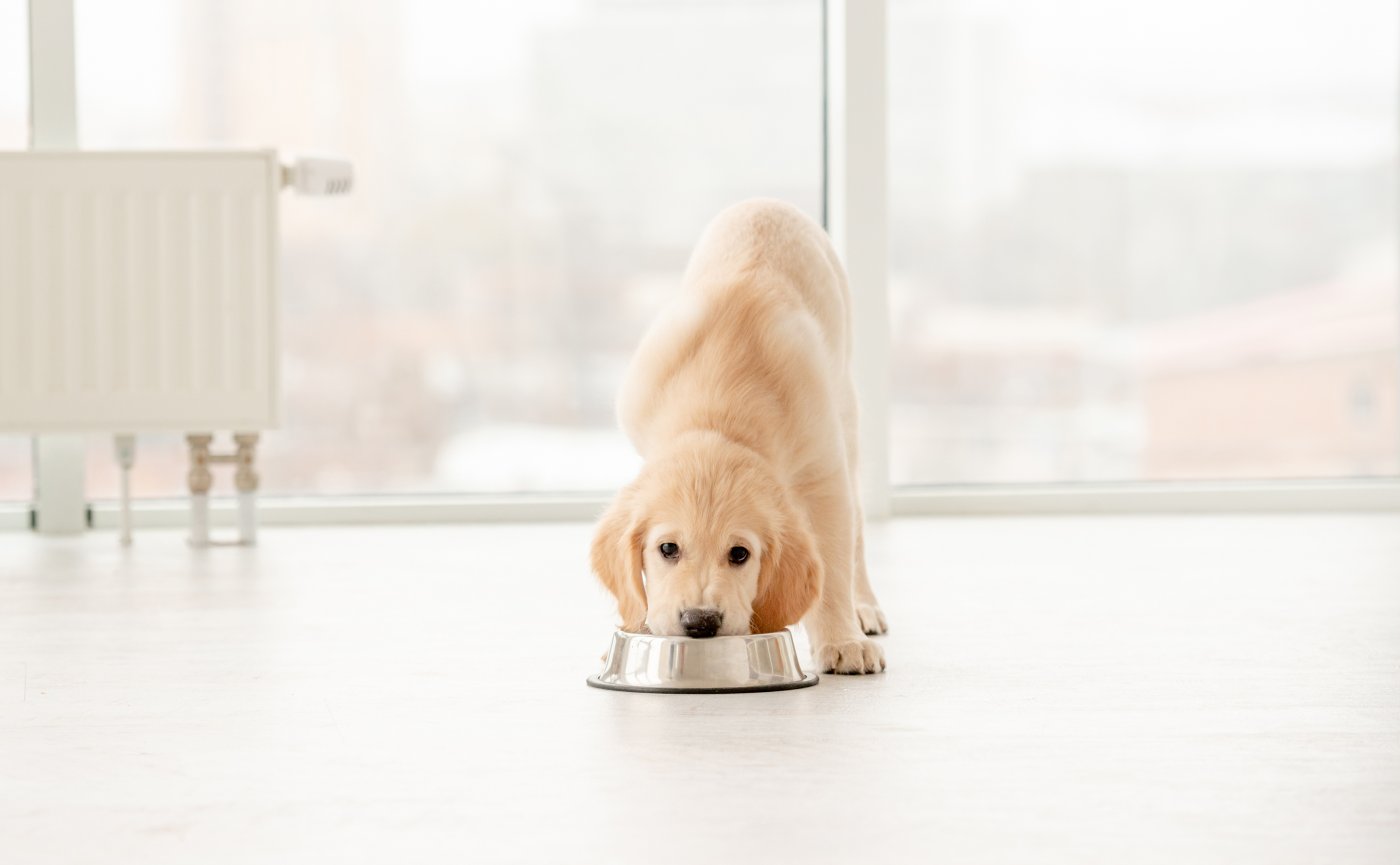
Do you think your dog is overweight?
Then first visit the vet. It can accurately determine weight and rule out diseases. If your dog is indeed too fat, make a plan of action. It is good to know that losing weight should be done step by step. A dog is allowed to lose about 1% of its body weight per week. For a dog of 30 kilos, that is 300 grams per week.
Make it easier to lose weight with these tips:
- 1. Switch to diet food: this contains fewer calories, but contains all the vitamins and minerals.
- 2. Get more exercise: go for a walk more often, play fetch games or let your dog go for a swim.
- 3. Make your four-legged friend make an effort before eating: Chunks in a food toy keep him busy and make him eat more slowly.
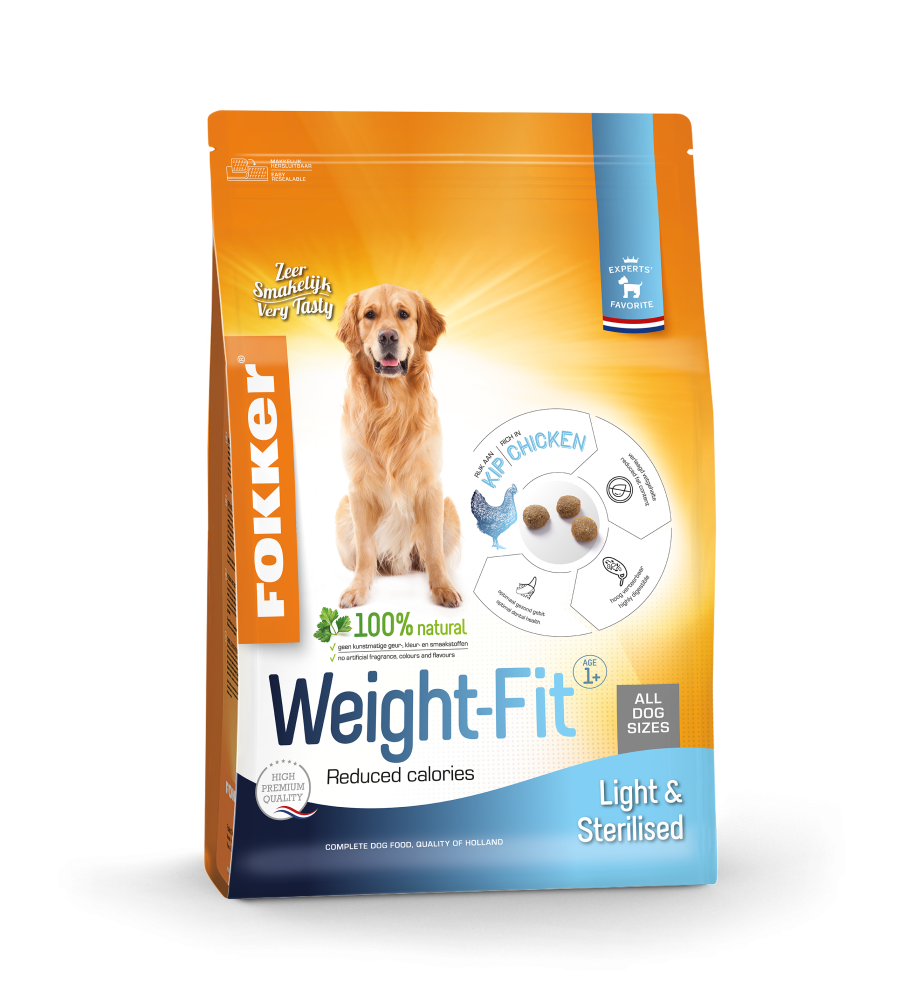
High premium dog food for less active dogs and dogs with (the tendency to) overweight.
See product
 Language
Language  Login
Login